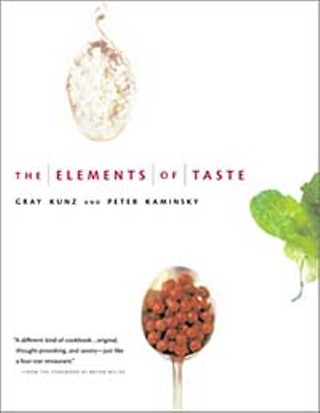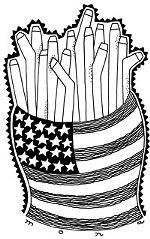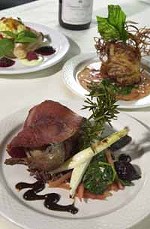The Tastes of Taste
Two books that dissect the palate -- one metaphorically, the other scientifically
By Rebecca Chastenet dé Gery, Fri., Dec. 28, 2001

The Elements of Taste
Gray Kunz and Peter Kaminsky's new book, The Elements of Taste (Little, Brown & Co., $40), focuses on the palate -- a word that we food writers love to throw around, but that, for many people, means little more than "mouth." A quick flip through the book reveals well-lit photographs and intriguing recipes such as Okra-Bell Pepper Ratatouille With Mung Bean Curry Crepe or Sole in Crisped Couscous With Watercress, Ginger, and Asparagus Broth. But the real meat of the book comes in its introduction -- a thoughtful, informative dissection of what Kunz and Kaminsky have defined as the "fourteen elements of taste."In their introduction, the authors -- Kunz is the former chef of New York's celebrated Lespinasse restaurant, and Kaminsky is a professional food and outdoor writer who contributes regularly to Food & Wine and The New York Times -- begin by explaining to us home cooks that chefs don't create from recipes. They create from tastes and memories of tastes, and what is available to them on any given day. They then go on to explain that there has been little change in the way food writers have attempted to explain taste since "Galileo and the Borgias," thus admitting that they've got their work cut out for them since explaining taste is exactly what they intend their book to do.
In their effort to demystify taste (and simplify the instinctive understanding good chefs have of the human palate), Kunz and Kaminsky further break down their 14 taste elements into four broad categories: Tastes That Push, Tastes That Pull, Tastes That Punctuate, and Taste Platforms. The men stick to a music metaphor throughout their explanation of taste, detailing how flavors in a recipe are intentionally composed (like a symphony) by a chef with the aim of speaking directly to the multidimensional palate. Chefs don't just combine good ingredients and hope to take our mouths by pleasant surprise, the authors insist. And if this does occasionally happen, well, their informed readers now possess the tools to explain why their palate has been tantalized!
The men close their fascinating introduction by boiling it all down to taste as a narrative. "Like a story or a song," they write, "a recipe has a beginning, middle, and end." And, they continue, not everybody will experience every taste to the same degree, although "pretty much everyone will experience tastes in the sequence we lay out."
This brings us to the recipes. For each of the food compositions the men have created in their book, they provide taste notes. Wine aficionados will be familiar with dissecting flavors and aromas in this way, Kunz and Kaminsky note. Most eaters, however, will not. (At least eaters other than those of us who make a living at attempting to dissect tastes and give meaning to chefs' recipes.)
A simple recipe for pan-roasted salmon with aromatic salted herbs gets this taste explanation: "The first taste note is salty. It pushes everything else forward. Next you bite through the spice mix and floral herbs until you meet the tooth resistance of the fish. All of the flavors mix at this point. The aromatic herbs help focus the big flavor of the salmon. The parsley softens the spices. The bulby chives pull up more flavor. The mint works with the nutmeg to pull sweetness out of the salmon. As generations of gravalax makers have known, dill's freshness marries well with salmon. The end notes are oceanic from the salmon, salty, and piquant from the pepper."
Anyone who loves to eat and appreciates the challenge of a little detective work will get a kick out of Kunz and Kaminsky's demystification of the palate. I can hardly wait to try the recipes and compare my own taste notes to those that Kunz and Kaminsky so authoritatively have laid out. I just hope the men won't put me out of business by making a food critic out of anyone who can eat!








